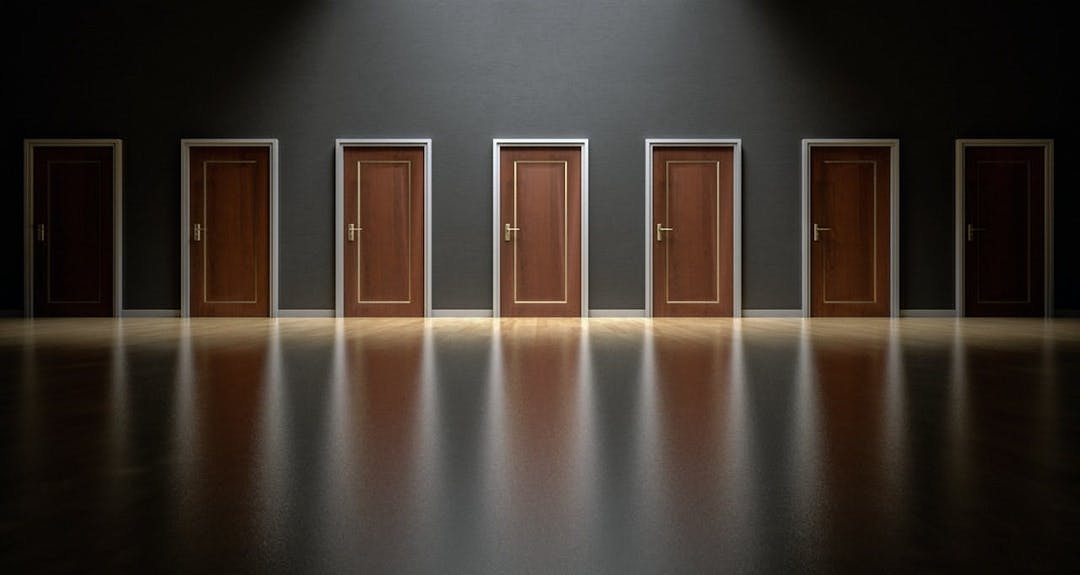Why More Choice Means Less Freedom
Q: What would you like to have … fruit juice, soda, tea, or coffee?
A: Tea, please.
Q: Ceylon tea, herbal tea, bush tea, iced tea or green tea?
A: Ceylon tea.
Q: How would you like it? Black or white?
A: White.
Q: Milk, whitener, or condensed milk?
A: With milk.
Q: Would you like it with sweetener, sugar or honey?
A: With sugar.
Q: Beet sugar or cane sugar?
A: Cane sugar.
Q: White, brown or yellow sugar?
A: Forget about tea just give me a glass of water instead.
Q: Mineral water or still water?
A: Mineral water.
Q: Flavored or non-flavored?
A: I’d rather die of thirst…
Unravelling traditional thinking about choice
This joke sheds some cautionary light on the potential risks, which arise when customers are blitzed with an overabundance of choice. Many corporations abstractly uphold the following half-truth: more choices will lead to more customer utility. At first glance, this assumption seems irrefutable. It is a rather simple deduction: the greater the number of choices, the greater the likelihood that the choice set will include the optimal choice for any given consumer. Upon closer inspection, the inadequacies of this traditional ‘econ-thinking’ begin to unfold. The fact that some choice is good, does not necessarily mean that more choice is better. Before explaining why, it is worthwhile to first justify how this pursuit can benefit us.
The relevance of choice architecture
Choice architecture is not some esoteric domain reserved exclusively for academics, behavioral economists or market research analysts. Instead, most of us have already adopted this role as we have all presented choices to others when selling. For example, we design and present choices when we sell our property (i.e., condo, car, collectibles, etc) or sell ourselves (i.e., prospective employers, landlords, dates). So, there is a take-home message for all of us!
What is the problem with choice?
To explain why more choice is not necessarily better, I will briefly introduce Dr. Barry Schwartz’s thesis presented in his book, The Paradox of Choice. As Schwartz’s subtitle suggests, “the culture of abundance robs us of satisfaction.” Schwartz explains that the consumer culture is strongly impacted by freedom, self-determination and variety. In fact, this cultural impact is so strong that consumers have grown accustomed to this availability of choice. Consequently, customers are now reluctant to give up options. However, Schwartz warns readers that clinging to choices leads to increased anxiety, and dissatisfaction.
Think of the last time you were in the personal care aisle of a pharmacy to buy toothpaste. Walking down the aisle you are presented with countless types of toothpastes; anti-decay, desentizing, anti-calculus, anti-plaque, whitening, organic, fluoride, fluoride-free. Which one do you choose? For many consumers, this decision comes at the expense of some level of anxiety. Some customers may think, “Maybe I should have bought the anti-decay instead of the anti-plaque. Now that I think of it, my teeth seem to be decaying. Maybe, I should go see the dentist. I actually shouldn’t have taken this job, my last job had a better dental plan.” Although this example is somewhat hyperbolic, I use it to illustrate the domino effect of negative post-purchase self-talk. We can see how doubt concerning which toothpaste to buy can quickly lead to more substantial doubt relating to career choices.
Substitute toothpaste with Medicare drug plans or social security investments and the stakes are dramatically raised. In some American states, in excess of 100 Medicare drug plans are available for senior citizens. In this example, senior citizens have a higher likelihood of feeling overwhelmed by the need to process information, understand policies, weigh out pros/cons and make informed decisions. Unfortunately, this paralysis typically reduces motivation to seek drug plans altogether because seniors put it off as non-essential. Seniors may think, “I’ll get to it eventually. Next week for sure.” Clearly then, an overabundance of choice should not be dismissed as a trivial affair. The consequences can be seriously detrimental and damaging.
Regardless of who choice architects (e.g., corporations, governments, friends) and decision makers (e.g., customers, voters, citizens) are or what is being chosen (e.g., toothpaste, Medicare plan, life insurance) the adverse consequences of choice overabundance are felt by all the parties involved. This is why strategically diagnosing the source of the problem via a psychological approach is so crucial.
What is the solution?
Consider a customer’s experience at a restaurant when ordering appetizers. Upon reading the menu, the customer is blitzed with a long list of soups: New England clam chowder, Philadelphia pepper pot, lobster stew, yellow pea soup, she-crab soup, tomato bisque, etc… In this case, all parties suffer. Customers become anxious, restaurateurs pay more running costs, service slows down and the quality of each soup reduces.
As choice architect trainees, the ‘specials of the day’ can now be appreciated. The specials act as a nudge because they prompt customers to order from the restaurateurs’ recommendations. Customers tend to jump to positive conclusions about these specials. The word itself makes us feel warm and fuzzy inside. Customers think, “The server recommended the yellow-pea soup today. They must have made it freshly in-house. I bet you they bought the peas from the local farmer’s market. They are in season!” Together, reducing the choice on the menu by replacing an exhaustive list with fewer daily specials minimizes the negative consequences associated with an overabundance of choice. This nudge increases the quality of the soup while lowering customer anxiety and running costs.
We can apply this insight into our daily consumption habits. In this restaurant example, customers can search for menus on restaurants’ websites, or consult yelp webpages. Customers could easily lessen the decision anxiety and paralysis by thinking of essential criteria to meet their specific appetitive needs. How much are you willing to spend on wine, an appetizer, a main course, or dessert? What kind of cuisine do you feel like eating? How much would you like to thrill your date?
Behavioral Science, Democratized
We make 35,000 decisions each day, often in environments that aren’t conducive to making sound choices.
At TDL, we work with organizations in the public and private sectors—from new startups, to governments, to established players like the Gates Foundation—to debias decision-making and create better outcomes for everyone.
The AI Governance Challenge
Why should we care?
To answer this question, we must zoom out of the consumers’ psychology to scan the broader landscape of macroeconomic systems. One system that deserves some scrutiny in this matter is capitalism. Not only does capitalism nurse the tyranny of choice, it also parents it. Despite the variations in capitalistic or quasi-capitalistic practices (e.g., free market, state capitalism), defining characteristics unequivocally amount to private property, wealth accumulation and competitive markets. I do not aim to criticize capitalism here. Rather, I want to point a looking glass in the direction of a truth that often goes unnoticed.
Competition does not only dwell within corporations, it is also embedded in the minds of consumers. As consumers, we feel the pressure to make the best choices all the time. Our choices must always be better than those of our next-door neighbours. We aspire to enrol our children in better ranking private schools. We buy smartphones with better display resolutions, more connectivity, and longer-lasting battery lives. We buy cars with more luxury, convenience, and fuel-efficiency. These purchase decisions are to some extent based on the facade of our public image and status. The bitter truth is that we continue to play ‘keep up with the Joneses’. It is about time we realize that the game is rigged!
While as consumers, we like the illusion of choice because it perpetuates the even grander falsehood of freedom, competitive free markets and the resulting overabundance of choice actually limits our freedom.
About the Author
Arash Sharma
Arash is a Behavioural Scientist at the Government of Canada.




